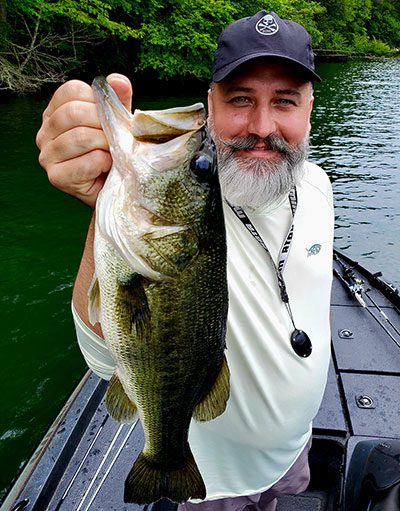It has been very hot and the end of summer is near. Here in Western North Carolina we have many lakes with a variety of forage that effect bass in different ways. You can actually target bass that are keyed into certain food. For example, if you fish near bluegill beds chances are you will need to use a bait that looks like bluegill. If you are looking for herring eaters you will need baits that look and act like blueback herring. Being aware and looking for clues will lead you to these feeding hot spots.
Having a graph will help you find certain structural features that will help you focus on areas with active feeding bass. On herring lakes, you will see blow ups where bass will school and corral these shad. If trout are stocked, you will need to know where they will be located in a body of water and use baits that will be the best representation of what you are trying to mimic.
In the mountains, lakes in different elevations will have higher or lower temperatures. The higher lakes will have lower temperatures, while lakes in lower elevations will have higher temperatures. This effects the patterns of all fish, including the time the seasonal transitions change as well. The speed at which you have to retrieve a lure can be effected with temperatures. Once you get in the upper 80’s things start to slow down and going to the plastics with subtle action becomes the main bait.
Scott Norton is a Western North Carolina native. Born in Asheville, N.C., he is a long-time hunter, angler and weekend warrior.
